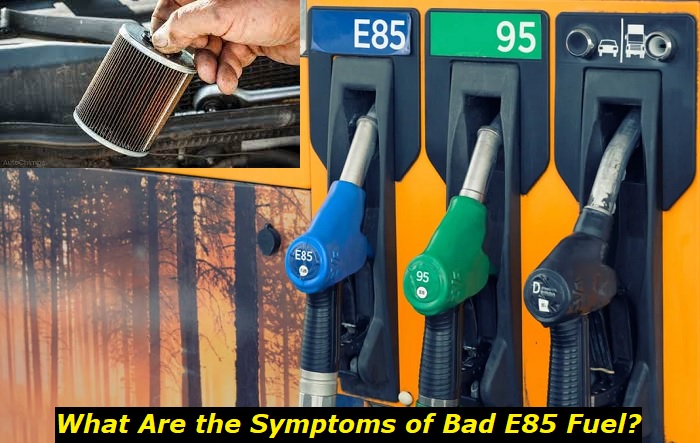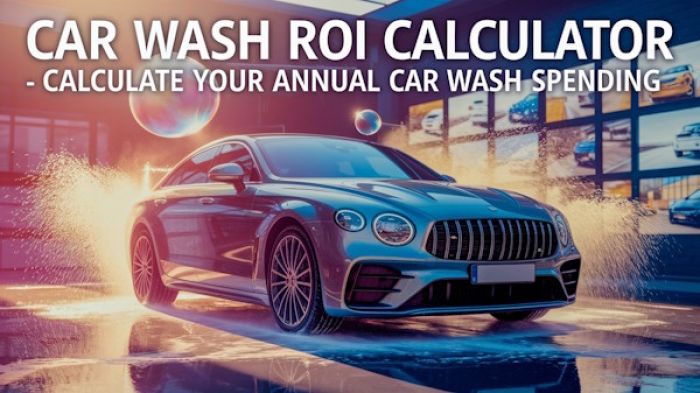E85 is gaining popularity as an alternative fuel type for automobiles. It's made using a blend of 85% ethanol and only 15% gasoline. Since ethanol is a biofuel that is derived from fermenting plant matter, E85 is considered a renewable source of energy which is also good for the environment.
Just like gasoline, E85 also tends to go bad after a while. And unlike gasoline, even if the ratio between gasoline and ethanol is off, you could have a bad batch of E85. If your vehicle is running with bad E85, there are some bad E85 symptoms you would notice. These include the engine running rough, difficulties firing up the engine, decreased fuel efficiency, and sluggish acceleration among others. If you notice any of these symptoms, you should immediately drain your fuel tank and run regular gasoline. Also, follow up with a proper check-up with a mechanic.

In the following article, we'll gain a better understanding of E85 and delve into the symptoms of bad E85 and what you should do to avoid them.
- What is E85
- Symptoms of bad E85
- What to do
- How to identify bad E85
What Is E85?
Before looking into the symptoms of bad E85, we first need to understand E85 better. Even some who use E85 as an alternative fuel on a regular basis do not have a proper understanding of what E85 is. So what exactly is E85?
As mentioned E85 is a fuel that uses a blend of 85% ethanol and 15% gasoline. This is where the name E85 is derived from. E stands for ethanol and since 85% of ethanol is used, the name E85.
Ethanol is an alcohol-based fuel that is made from the fermentation of plant matter. The majority of the ethanol that hits the market is made from corn but other plants can also be used. Since the main composition of E85 is coming from plant matter, E85 is considered a renewable energy source as plants can be cultivated again replenishing the supply.
Can All Vehicles Run On E85?
Not all vehicles can run on E85 fuel. Vehicles that can use E85 are known as Flexible Fuel vehicles. These machines are engineered to run on an ethanol-based fuel and the engine can handle the properties of ethanol. So before you run E85 on your vehicle, consult your manufacturer to confirm that your vehicle is indeed an FFV.
If you use E85 on a vehicle that is not designed to handle an ethanol-based fuel you'll be risking some serious damage. You would experience fuel system corrosion, decreased performance, and mounds of engine trouble.
Are There Other Ethanol-Based Fuel Types?
Other than E85, there are other blends of ethanol and gasoline. They inclined E10, E15, and E20 to E30. You could also find E85+ which contains more than 85% ethanol. E10 is a mix that is compatible with most vehicles as the alcohol content is minimal. But anything above that can only be used by FFVs. E85+ is quite rare and made for other types of machinery and not vehicles.
Benefits Of Using Ethanol-Based Fuel
Other than being a renewable source of fuel, using E85 has many more benefits. For starters, it is better for the environment. Compared to gasoline, alcohol has a higher alcohol content in its molecule. This leads to cleaner complete combustion which reduces the release of harmful NO and CO into the atmosphere.
Ethanol also has a higher octane rating compared to gasoline. This increases performance and reduces the chances of engine knocking. So, with E85, you can expect improved acceleration and power. Plus, since E85 can be produced domestically, it reduces the need to import oil from overseas.
Symptoms Of Bad E85
As good as E85 is, bad E85 can leave you in a heap of trouble. Knowing the symptoms of bad E85 will allow you to diagnose the issue as soon as possible and take necessary action. Here are a few symptoms of bad E85 entering your engine.
1) Performance Issues
Using E85 fuel offers many performance boosts. But bad E85 is the complete opposite, it will lead to numerous performance issues. With a blend of bad E85, your vehicle might experience misfires, hesitant acceleration, and starting issues. The problems could lie in the fuel delivery or with the fuel itself.
2) Reduced Fuel Efficiency
Fuel efficiency is one of the downsides of E85. Ethanol burns considerably faster than gasoline. So, your ride tends to gobble more fuel. Depending on the vehicle, when using E85, you should expect a fuel efficiency drop anywhere from 5% to 30%. But this is when your E85 is in good condition. When you are equipped with a bad batch of E85, the drop in fuel efficiency is significantly higher.
3) Check Engine Light
Your check engine light illuminates when the system has detected a problem within the engine. If your E85 is bad, it will directly lead to problems within the engine. Thus the check engine light will illuminate. If it does illuminate, you need to properly investigate the cause for the check engine light to illuminate. Bad E85 could lead to engine trouble such as fuel system malfunctions, sensor issues, and combustion issues which would trigger the check engine light.
4) Damage To The Fuel System
Using E85 in a vehicle that is not capable of handling a blend of ethanol will cause the fuel system to corrode. An FFVs fuel system is designed to handle the properties of E85 so that the fuel system does not corrode. But it doesn't matter if you have an FFV if your E85 has gone bad. Even though the FFVs fuel system is protected from E85, it is not protected from bad E85. So, using bad E85 would cause your fuel system to corrode even if it is an FFV.
5) Starting Issues With E85
This is not necessarily a problem with bad E85 as you could encounter the same problem with proper E85. Ethanol is less volatile when compared to gasoline. This makes it harder to ignite during cold conditions. It is an urban myth that E85 freezes or turns into a gel during winter. It doesn't happen at least not in this dimension. In fact, E85 has a lower freezing point than gasoline. But the fact that E85 is volatile could lead to starting issues in winter.
What To Do When You Have Bad E85?
If you notice any of the above symptoms, it is evident that you've got a blend of bad E85. Continuing to drive with Bad E85 is vehicle suicide. So what should you immediately do when you notice these symptoms?
Once you notice symptoms like sluggish acceleration, starting trouble, reduced fuel efficiency, or poor performance, stop using E85 altogether. Try to drain the E85 off of your system. If you are already running on fumes, you may run your engine until you run out of fuel. If you have a lot, do not risk it and get your fuel drained.
Now rather than using another batch of E85, switch to regular gasoline. While running regular gasoline, keep an eye out for the symptoms that you noticed earlier. This should allow you to determine whether the problems were actually caused by E85. Keep track of your engine's smoothness, performance, and power delivery along with your fuel efficiency. If the E85 caused the above problems, your check engine light should also disappear if it was lit.
If the symptoms persist, it could be one of two things. One, the problem had nothing to do with the E85, or the E85 caused enough damage while it was in there. Either way, if the symptoms persist, you need to take your car to a professional. They'd have the expertise and the equipment to thoroughly diagnose your engine and other parts of the vehicle to find the exact cause of the problem.
If the bad E85 has corroded your fuel system, you'll need to inspect every part of the fuel system and replace them as needed. If your E85 fuel is causing trouble in cold conditions and you are unable to start your car, switch to winter-grade gasoline. Winter-grade gasoline is chemically engineered so that it isn't affected by freezing temperatures. Once the weather gets warmer, you can switch back to E85.
Can You Visually Distinguish Bad E85?
Distinguishing bad E85 is not as easy as distinguishing bad gasoline. Bad gasoline will show visible signs of degradation like a change in color and the presence of sediment. Just like gasoline, E85 also has an expiration date. Usually, it is only good for about 3 months. Though there are signs of bad or expired E85, they are not as apparent as the symptoms you'd see for bad gasoline.
But there are some signs that you could look out for with E85. If the E85 is contaminated with water, you would see two separate layers as E85 and water have 2 different densities. If you see a visible layer of water, don't use that E85. Similarly, if you see any other physical contaminants, avoid using that E85. The only giveaway of degraded E85 is the foul odor it emits. If you use E85 on a regular basis, you know how it smells when it is in ideal condition. If it smells funny, it is best to avoid it altogether.
Conclusion
E85 is one of the best alternative fuels out there and is increasing in popularity. If you own an FFV and use E85, you should know its limitations and how to properly use E85. Bad E85 can cause havoc in your engine, but if you can identify the symptoms early on and take the necessary steps immediately, you can minimize the damage to your vehicle.
You can make the most out of this fuel by adhering to manufacturer recommendations, seeking professional advice when necessary, and remaining updated about the quality of E85.
About the authors
The CarAraC research team is composed of seasoned auto mechanics and automotive industry professionals, including individuals with advanced degrees and certifications in their field. Our team members boast prestigious credentials, reflecting their extensive knowledge and skills. These qualifications include: IMI: Institute of the Motor Industry, ASE-Certified Master Automobile Technicians; Coventry University, Graduate of MA in Automotive Journalism; Politecnico di Torino, Italy, MS Automotive Engineering; Ss. Cyril and Methodius University in Skopje, Mechanical University in Skopje; TOC Automotive College; DHA Suffa University, Department of Mechanical Engineering






Add comment